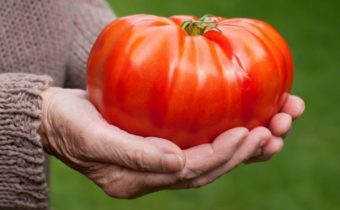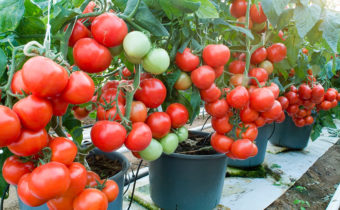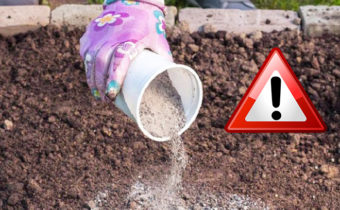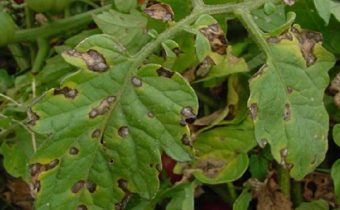Tomato "Siberian f1": large, productive, resistant
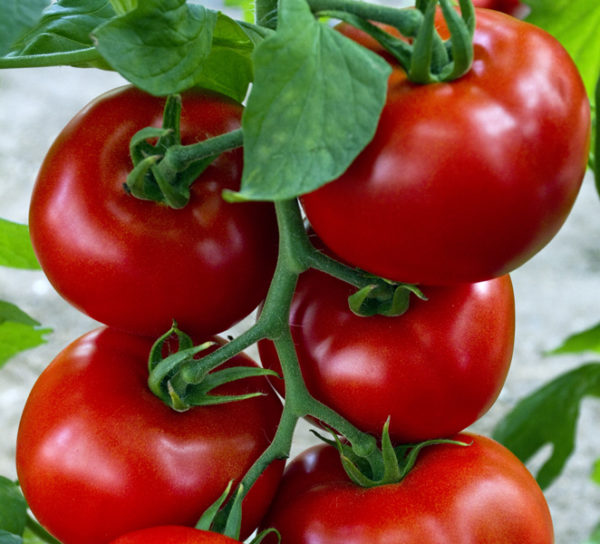
In order to extend the season of sweet fruits, breeders offer later ripening varieties and hybrids that are resistant to diseases and very fruitful. One of them is Sibiryak f1 tomato, which, according to the characteristics and description of the variety, meets these requirements, and according to reviews it reaches high yields.
The main thing about "Siberian f1"
This is a late ripening hybrid, its fruits ripen in 125-130 days after the appearance of the first shoots. Tomato "Sibiryak f1" is indeterminant, characterized by resistance to many viral diseases, overheating. It is offered for cultivation in the closed soil.
Fruits are large, formed after every 3-4 leaves:
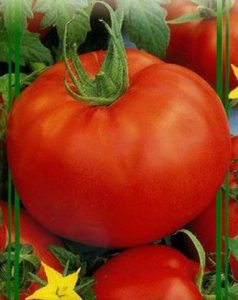
- The average weight of fruit is 350g (the first up to 600g).
- The shape of the tomato is flat-round, slightly ribbed.
- When ripe, acquire a bright red color.
- Tomatoes do not crack.
- The pulp of the fruit is aromatic, pleasant sweetish taste.
- It can be used in cooking for the manufacture of salads, various dishes, as well as the preparation of ketchup and lecho.
- With good care, the yield reaches 6kg with 1kv.m.
Diseases and pests
The hybrid Sibiryak f1 is characterized by resistance to diseases such as cladosporiosis, tobacco mosaic virus, fusarium.
However, like most tomatoes that are grown in the greenhouse, it needs preventive measures for protection, such as:
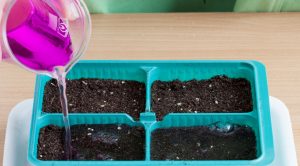
- Disinfection of seeds and soil for seedlings.
- Disinfection of greenhouses (walls, equipment, soil).
- The implementation of the rules of crop rotation.
- Treatment with phytosporin, other means for the prevention of diseases.
- Airing greenhouses to reduce the level of humidity.
Tomato pests - spider mites, slugs, Colorado beetles can be seen when inspecting the leaves of plants. Most often in greenhouses they are harvested by hand, or used against them by various folk remedies - decoction of wormwood, infusions of onion, garlic, bitter pepper. When mass appearance spray insecticidal drugs.
In order to prevent the larvae from entering the soil, it is necessary to carefully inspect the compost when putting it into the wells before planting. For the fight with wireworms recommend autumn digging of land with dolomite flour or lime.
See also: The best varieties of tomatoes for open ground
Advantages and disadvantages of tomato "Siberian f1"
 One of the main advantages of the tomato "Sibiryak f1" - the ability to receive the harvest, when most of the other varieties completed their fruiting. The unpretentiousness of the variety, resistance to diseases and harsh climatic conditions, allows to obtain fruits in greenhouses at a later date.
One of the main advantages of the tomato "Sibiryak f1" - the ability to receive the harvest, when most of the other varieties completed their fruiting. The unpretentiousness of the variety, resistance to diseases and harsh climatic conditions, allows to obtain fruits in greenhouses at a later date.
Other advantages of the hybrid:
- Productivity
- Large fruit.
- Pleasant aroma and taste of fruit.
- Universality of use of fruits.
- Fruits are well preserved and transported.
Plants require shaping, garters, and pinching, which is considered a disadvantage for some gardeners, but these methods are used to grow all tall tomatoes in greenhouses.
Features of growing
The term of planting plants for seedlings - 65-67 days before planting seedlings in greenhouses. Given this temporary supply, the seeds are treated:
- Disinfect in solution of potassium permanganate (within 20 min.)
- Washed.
- Sustained for 5-6 hours in a solution of trace elements, infusion of ash or growth stimulants.
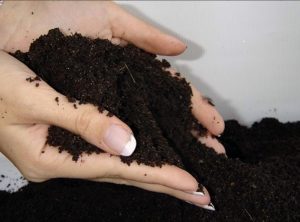 Soil for planting can be prepared by mixing disinfected soil from the garden with compost and ash. If the soil is not loose enough, you can add peat to it.
Soil for planting can be prepared by mixing disinfected soil from the garden with compost and ash. If the soil is not loose enough, you can add peat to it.
Various types of soil for planting seedlings offers trade.
Seeds are sown in moist soil with an interval of 2-2.5 cm, the layer of earth on top of the seeds should not be more than 5-8 mm. Capacities for seedlings should have drainage holes so that the moisture in them does not stagnate. Sown seeds are covered with foil, cleaned for a few days in a warm room (24-25 degrees).
See also: Tomato varieties for polycarbonate greenhouses
Growing seedlings
A few days later, immediately after the appearance of the sprout-loops, the seedlings are put up on sunny windowsills or verandas. If the weather is cloudy and the illumination is weak, add artificial lighting.
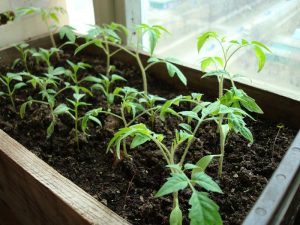 As a hardening plant, apply a two-week exposure at lower temperatures, while lowering the temperature in the afternoon to 15-16 degrees, at night to 12-14 degrees.
As a hardening plant, apply a two-week exposure at lower temperatures, while lowering the temperature in the afternoon to 15-16 degrees, at night to 12-14 degrees.
Watering plants during this period is important only with warm water and very moderately - just to prevent the soil from drying out.
After the formation of several true leaves, the tomatoes dive into separate cups or pots. Can be transplanted into more spacious boxes, so that the plants do not interfere with each other grow.
Caring for seedlings is periodic watering and 1-2 fertilizing (depending on the condition of the plants).
Planting and caring for plants in the greenhouse
The holes for planting tomatoes are made at a distance of 40 - 45 cm in a row and 60 cm between the rows. They make ashes and compost, water. After planting, the plants are watered once more and set up supports.
Care further consists of:
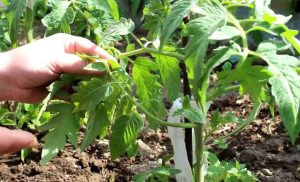
- Regular watering, 1 time per week. Water the plants under the root, preferably in the morning, with warm water.
- Weeding and loosening the land around tomatoes.
- Soil mulching with grass or hay. Mulching prevents the land from drying out, reduces evaporation, and prevents the growth of weeds.
- Top dressing: during the first weeks - infusion of fermented grass or mullein diluted in water. After the formation of ovaries, add mineral potash and phosphate fertilizers. If necessary, trace elements are added to the plant's diet. All subcortex, it is important to carry on wet ground - after watering.
- Airing greenhouses with air vents and doors to reduce air humidity.
- Formation of plants in one stem. Tomatoes are tied to supports as they grow, pruned stepchildren and yellowed leaves. When a threat of plant disease appears, they are sprayed with phytosporin or other antifungal agents.
See also: Variety of tomato "Matryoshka": a great choice for canning
Video: First care for tomatoes after disembarkation



 (3 ratings, average: 3,33 from 5)
(3 ratings, average: 3,33 from 5)